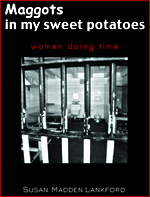Arkansas scored the biggest drop in incarcerated young
people–93.4%, from a rate of 76 youths per 100,000 juveniles to only five. Next in order were MI (-89.6%), MS (-88.5%), SC (-88.1%) and CA (-87.7%). Five states (NY, AZ, OH, NC and TX) have seen their imprisonment rates drop between 65% and 80% over the decade and a half. And eight others have lowered their incarceration rates by more than 50%: WA, TN, RI, NV, GA, LA and FL.
One big reason is that 23 states have enacted or are in the process of setting in law major juvenile justice reforms. In recent years, seven states have passed laws excluding certain juveniles from being placed in state custody, reflecting a growing recognition of the steep cost and low public safety return of confining juveniles who commit lower-level offenses in residential facilities. Three states also have modified the length of time juveniles spend in custody. Because research shows little to no recidivism reduction from extended stays for many offenders, a handful of states have adopted mechanisms to evaluate youth placements and shorten them when appropriate.
1) In 2014, Hawaii banned commitment to the state’s youth correctional facility for misdemeanor offenses.
2) Kentucky adopted reforms in 2014 that prohibit most misdemeanor offenders and Class D felons—the least serious class—from commitment to the Department of Juvenile Justice.
3) Georgia passed legislation in 2013 to prohibit residential commitment for all “status offenses,” such as skipping school or running away, and for misdemeanor offenders, except those with four prior adjudications, including at least one felony.
4) In 2011, Florida banned state commitment for misdemeanors, with certain exceptions for youth with prior delinquency and those at high risk of re-offending.
5) In 2009, Mississippi prohibited commitment to the state training school for any juvenile offender adjudicated as delinquent for a nonviolent felony or with fewer than three misdemeanors.
6) In 2007, California banned state commitment for all low-level and nonviolent offenses.
7) As part of a complete overhaul of its juvenile corrections system in 2007, Texas barred commitments to secure facilities for misdemeanor offenses.
Several other states, including Ohio and Virginia, took steps to remove misdemeanor offenders from state commitment in the 1980s and 1990s.
Moderating length of stay:
1) In 2014, Kentucky limited the amount of time a juvenile may be held by the Department of Juvenile Justice in out-of-home placement for treatment and the total amount of time a youth may be committed or under court supervision.
2) In 2013, Georgia eliminated the mandatory minimum sentence for certain felony offenses and reduced the maximum term for less serious felony offenses from five years to 18 months.
3) In 2011, Ohio expanded judicial discretion in release decisions for committed youth. Legislation authorized the courts to release from the Department of Youth Services offenders serving mandatory sentences once certain minimum terms are met.







 youth. That’s what a series of recent reports have shown. In June the Tribal Law and Policy Institute reported that state courts are twice as likely to incarcerate Native teens for minor crimes like truancy and alcohol use, than any other racial and ethnic group. All three recent reports call for reform.
youth. That’s what a series of recent reports have shown. In June the Tribal Law and Policy Institute reported that state courts are twice as likely to incarcerate Native teens for minor crimes like truancy and alcohol use, than any other racial and ethnic group. All three recent reports call for reform.









